Discover 11 hidden attractions, cool sights, and unusual things to do in La Marsa (Tunisia). Don't miss out on these must-see attractions: Carthage National Museum, Ennejma Ezzahra, and Synagogue Keren Yéchoua. Also, be sure to include Acropolium of Carthage in your itinerary.
Below, you can find the list of the most amazing places you should visit in La Marsa (Tunis).
Table of Contents
Carthage National Museum
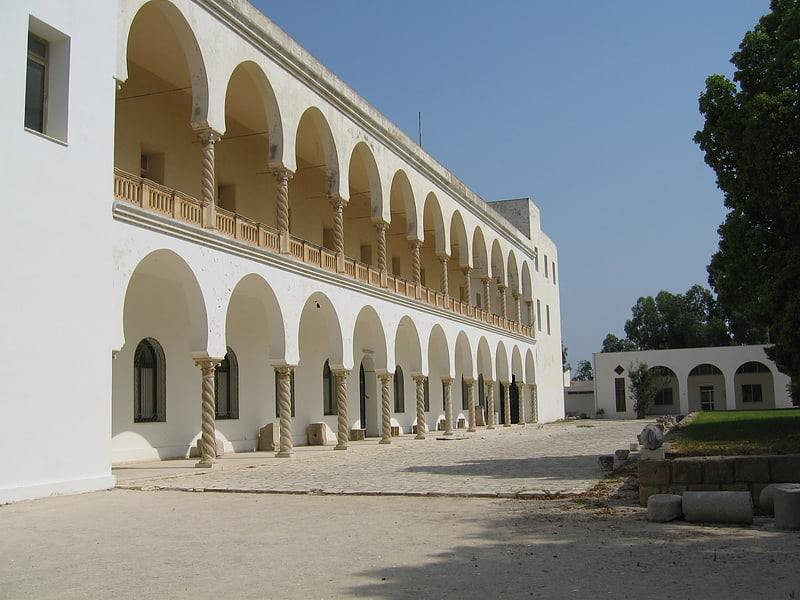
Also known as: المتحف الوطني بقرطاج
Small museum with ancient relics and art. Carthage National Museum is a national museum in Byrsa, Tunisia. Along with the Bardo National Museum, it is one of the two main local archaeological museums in the region. The edifice sits atop Byrsa Hill, in the heart of the city of Carthage. Founded in 1875, it houses many archaeological items from the Punic era and other periods.
In 1975, excavations exposed a Late Roman house with fragments of Roman mosaics and further off the property was a large church dating to the 5th century. Building plans to create a site museum went into effect in 1983; a year later the museum opened through financial donations from 59 members of a non-profit organization EARTHWATCH. The museum is a collaboration of specialists and volunteers who dedicated their talents and resources to preserve the threatened site of the ancient Mediterranean, Carthage.
The Carthage National Museum is located near the Cathedral of Saint-Louis of Carthage. It allows visitors to appreciate the magnitude of the city during the Punic and Roman eras. Some of the best pieces found in excavations are limestone/marble carvings, depicting animals, plants and even human sculptures. Of special note is a marble sarcophagus of a priest and priestess from the 3rd century BC, discovered in the necropolis of Carthage. The Museum also has a noted collection of masks and jewelry in cast glass, Roman mosaics including the famous "Lady of Carthage", a vast collection of Roman amphoras. It also contains numerous local items from the period of the Byzantine Empire. Also on display are objects of ivory.[1]
Address: Byrsa Hill, 2016 Carthage
Ennejma Ezzahra

Also known as: النجمة الزهراء
Palace in Carthage, Tunisia. Ennejma Ezzahra, sometimes spelled Nejma Ezzohara, also The Palace of the Baron d'Erlanger is a historical palace at Sidi Bou Said, in northern Tunisia, built from 1912 - 1922 by Baron Rodolphe d'Erlanger as his home in Tunisia. It is considered to be an outstanding example of Arab-Islamic architecture in Tunisia and was built historic elements by craftsmen from Tunisia. After the independence of Tunisia in 19, it was the first museum to be opened in the country.[2]
Address: Rue du 2 Mars 1934, La Marsa
Synagogue Keren Yéchoua
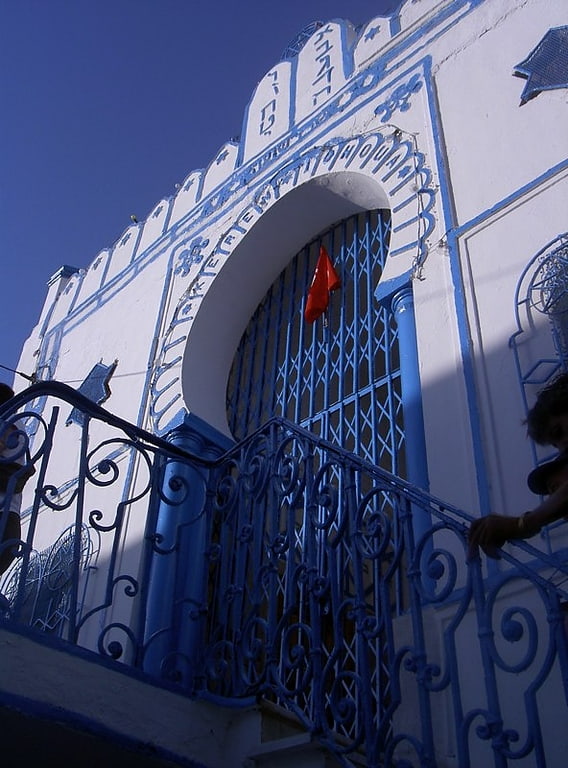
Keren Yeshoua Synagogue, often written as Keren Yéchoua or Keren Ichoua, is a Jewish synagogue in the Tunisian town of La Marsa, a suburb of Tunis.[3]
Acropolium of Carthage
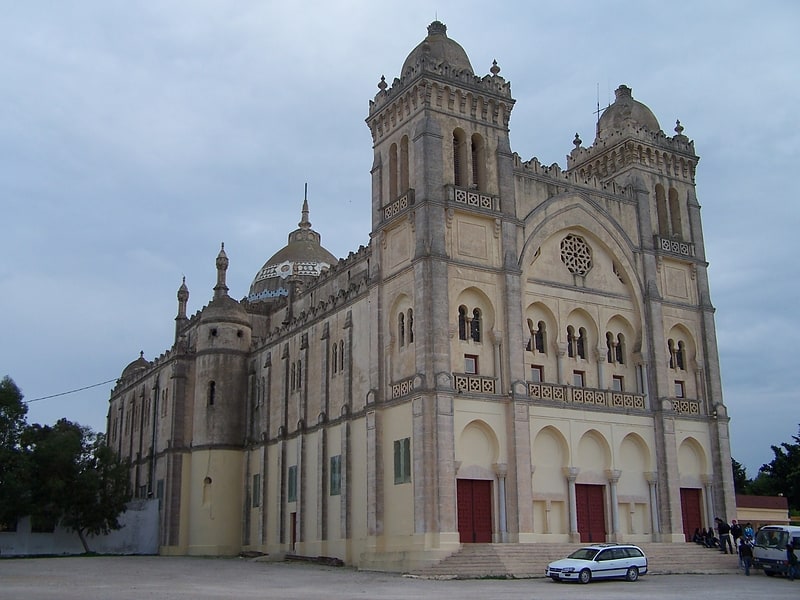
Also known as: كاتدرائية القديس لويس بقرطاج
Music venue in a 19th-century church. The Acropolium, also known as Saint Louis Cathedral, is a Roman Catholic church located in Carthage, Tunisia.
The cathedral sits on the peak of Byrsa Hill, near the ruins of the ancient Punic and then Roman city. It was built atop the ruins of an old temple dedicated to Eshmun, the Punic god of healing. The edifice can still be accessed from the basement.
Since 1993, the cathedral has been known as the "Acropolium". It is no longer used for worship, but instead hosts public events or concerts of Tunisian music and classical music. Currently, the only Roman Catholic cathedral operating in Tunisia is the Cathedral of St. Vincent de Paul in Tunis.[4]
Address: Byrsa Hill, 2016 Carthage
Carthage Paleo-Christian Museum
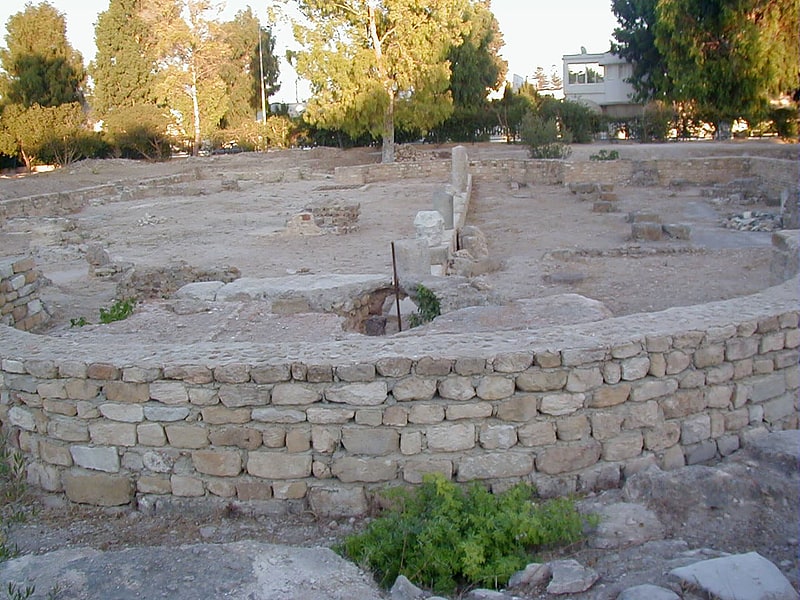
Also known as: المتحف المسيحي المبكر بقرطاج
Museum in Tunisia. The Carthage Paleo-Christian Museum is an archaeological museum of Paleochristian artifacts, located in Carthage, Tunisia. Built on an excavation site, it lies above the former Carthaginian basilica.[5]
North Africa American Cemetery and Memorial
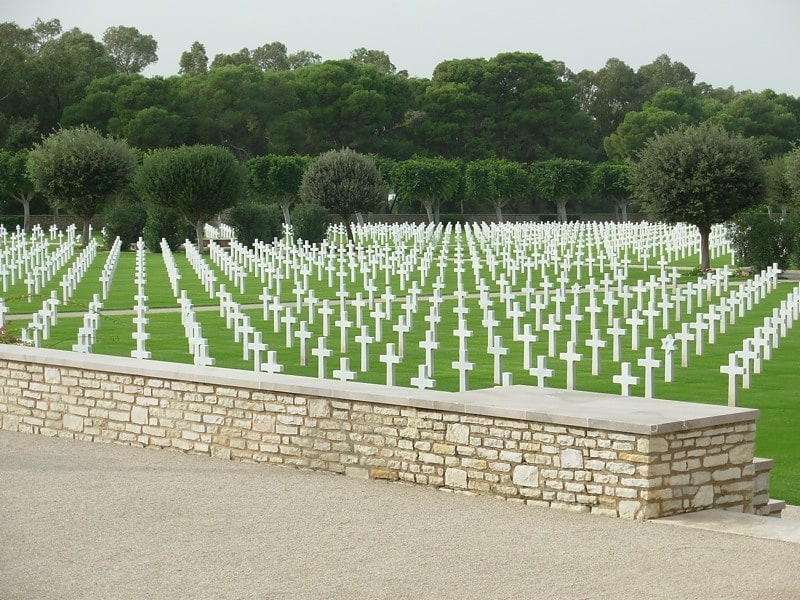
Military cemetery in Carthage, Tunisia. North Africa American Cemetery and Memorial is a Second World War military war grave cemetery, located in the town of Carthage in Tunisia. The cemetery, the only American one in North Africa and dedicated in 1960, contains 2,841 American war dead and covers 27 acres. It is administered by the American Battle Monuments Commission.[6]
Address: 552 Rue Roosevelt, 2016 Carthago
Carthage amphitheatre
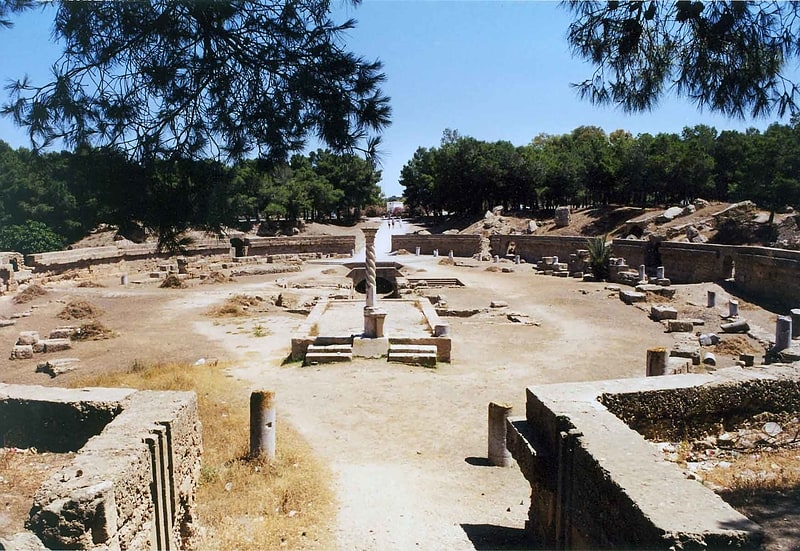
Also known as: المسرح الدائري بقرطاج
Historical landmark in Tunisia. The Carthage Amphitheatre was a Roman amphitheatre constructed in the first century CE in the city of Carthage, Tunisia, which was rebuilt by Dictator Julius Caesar and became the capital of Africa Proconsularis.
Predation plaguing the archaeological site only exists within the arena itself. The building earned the admiration of travelers, especially during the Middle Ages.[7]
Carthage
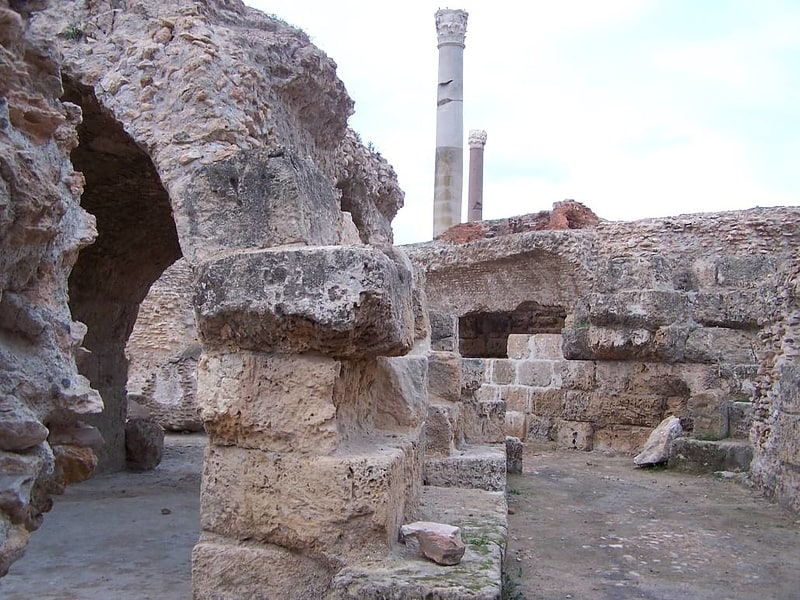
Also known as: الموقع الأثري بقرطاج
City. Carthage was the capital city of the ancient Carthaginian civilization, on the eastern side of the Lake of Tunis in what is now Tunisia. Carthage was one of the most important trading hubs of the Ancient Mediterranean and one of the most affluent cities of the classical world.
The city developed from a Canaanite Phoenician colony into the capital of a Punic empire which dominated large parts of the Southwest Mediterranean during the first millennium BC. The legendary Queen Alyssa or Dido is regarded as the founder of the city, though her historicity has been questioned. According to accounts by Timaeus of Tauromenium, she purchased from a local tribe the amount of land that could be covered by an oxhide.
The ancient city was destroyed by the Roman Republic in the Third Punic War in 146 BC and then re-developed as Roman Carthage, which became the major city of the Roman Empire in the province of Africa. The city was sacked and destroyed by Umayyad forces after the Battle of Carthage in 698 to prevent it from being reconquered by the Byzantine Empire. It remained occupied during the Muslim period and was used as a fort by the Muslims until the Hafsid period when it was taken by the Crusaders with its inhabitants massacred during the Eighth Crusade. The Hafsids decided to destroy its defenses so it could not be used as a base by a hostile power again. It also continued to function as an episcopal see.
The regional power had shifted to Kairouan and the Medina of Tunis in the medieval period, until the early 20th century, when it began to develop into a coastal suburb of Tunis, incorporated as Carthage municipality in 1919. The archaeological site was first surveyed in 1830, by Danish consul Christian Tuxen Falbe. Excavations were performed in the second half of the 19th century by Charles Ernest Beulé and by Alfred Louis Delattre. The Carthage National Museum was founded in 1875 by Cardinal Charles Lavigerie. Excavations performed by French archaeologists in the 1920s first attracted an extraordinary amount of attention because of the evidence they produced for child sacrifice. There has been considerable disagreement among scholars concerning whether child sacrifice was practiced by ancient Carthage. The open-air Carthage Paleo-Christian Museum has exhibits excavated under the auspices of UNESCO from 1975 to 1984. The site of the ruins is a UNESCO World Heritage Site.[8]
Gammarth
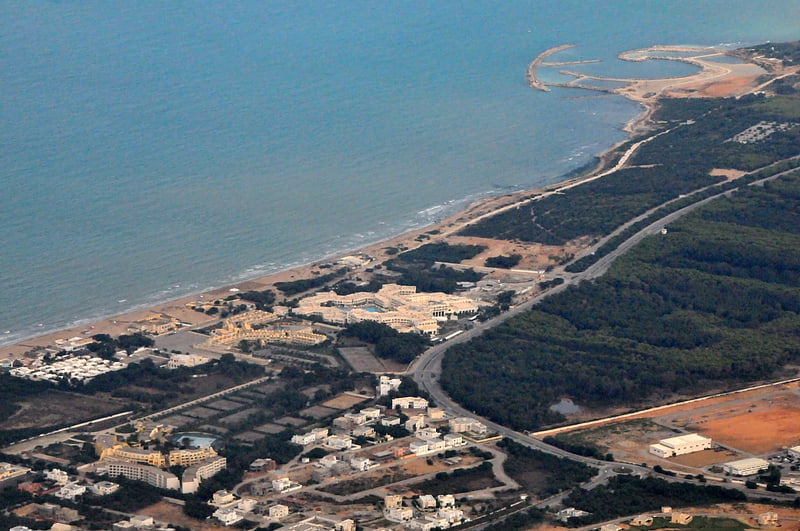
Town in Tunisia. Gammarth is a town on the Mediterranean Sea in the Tunis Governorate of Tunisia, located some 15 to 20 kilometres north of Tunis, adjacent to La Marsa. It is an upmarket seaside resort, known for its expensive hotels and shops. Gammarth began as a small fishing village but following independence from France it blossomed into a resort from the 1950s. Tourism now provides the backbone to the local economy. Gammarth has many five-star hotels and restaurants and also contains many lavish white villas and coves in the vicinity. Notable villas include Abou Nawas Gammarth and Les Dunes.
Excavations at Gammarth Hill have revealed some catacombs and Talmudic inscriptions. These ancient burial chambers are believed to date to Roman times in the 2nd century when nearby Carthage was a thriving Roman city.
Gammarth also contains a notable cinema complex.[9]
Cisterns of La Malga

Also known as: صهاريج مالجا
Archaeological site in Carthage, Tunisia. The Cisterns of La Malga or Cisterns of La Mâalga are a group of cisterns, which are among the most visible features of the archaeological site of Carthage near Tunis, Tunisia. They are some of the best preserved Roman cisterns.
The cisterns, with a capacity of 50,000–60,000 m3 (1,800,000–2,100,000 cu ft), received water from a branch of the Zaghouan Aqueduct (exactly which branch remains uncertain). They were designed to provide the water supply for Carthage, the most important city of Africa Proconsulare during the High Empire, and especially to supply the Baths of Antoninus.
As part of the site of Carthage, the cisterns are classified as a World Heritage Site by UNESCO. On 17 February 2012, the Tunisian government proposed that the whole Zaghouan-Carthage Roman hydraulic complex, of which they are a part, should be classed as a world heritage site.[10]
Church of Carthage
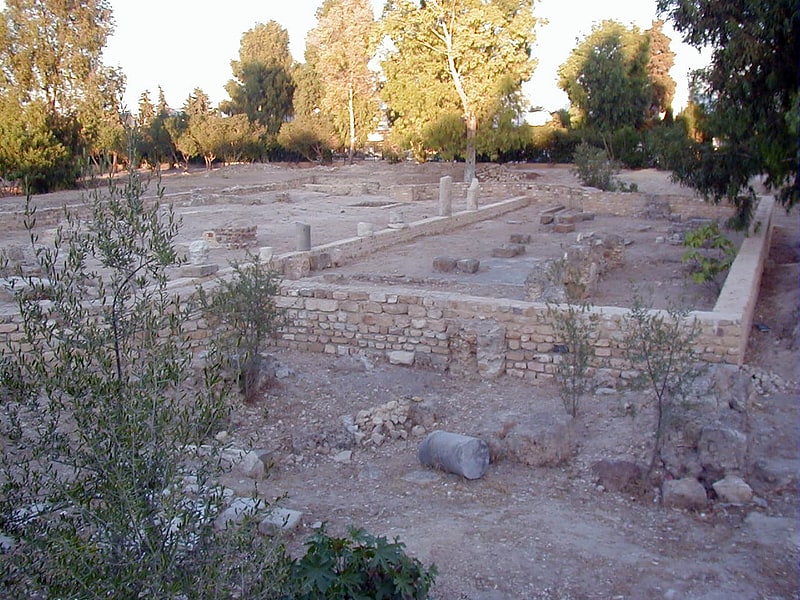
Also known as: كنيسة قرطاج
The Archdiocese of Carthage, also known as the Church of Carthage, was a Latin Catholic diocese established in Carthage, Roman Empire, in the 2nd century. Agrippin was the first named bishop, around 230 AD. The temporal importance of the city of Carthage in the Roman Empire had previously been restored by Julius Caesar and Augustus. When Christianity became firmly established around the Roman province of Africa Proconsulare, Carthage became its natural ecclesiastical seat. Carthage subsequently exercised informal primacy as an archdiocese, being the most important center of Christianity in the whole of Roman Africa, corresponding to most of today's Mediterranean coast and inland of Northern Africa. As such, it enjoyed honorary title of patriarch as well as primate of Africa: Pope Leo I confirmed the primacy of the bishop of Carthage in 446: "Indeed, after the Roman Bishop, the leading Bishop and metropolitan for all Africa is the Bishop of Carthage."
The Church of Carthage thus was to the Early African church what the Church of Rome was to the Catholic Church in Italy. The archdiocese used the African Rite, a variant of the Western liturgical rites in Latin language, possibly a local use of the primitive Roman Rite. Famous figures include Saint Perpetua, Saint Felicitas, and their Companions (died c. 203), Tertullian (c. 155–240), Cyprian (c. 200–258), Caecilianus (floruit 311), Saint Aurelius (died 429), and Eugenius of Carthage (died 505). Tertullian and Cyprian are both considered Latin Church Fathers of the Latin Church. Tertullian, a theologian of part Berber descent, was instrumental in the development of trinitarian theology, and was the first to apply Latin language extensively in his theological writings. As such, Tertullian has been called "the father of Latin Christianity" and "the founder of Western theology." Carthage remained an important center of Christianity, hosting several councils of Carthage.
In the 6th century, turbulent controversies in teachings affected the diocese: Donatism, Arianism, Manichaeism, and Pelagianism. Some proponents established their own parallel hierarchies.
The city of Carthage fell to the Muslim conquest of the Maghreb with the Battle of Carthage (698). The episcopal see remained but Christianity declined under persecution. The last resident bishop, Cyriaque of Carthage, was documented in 1076.
In 1518, the Archdiocese of Carthage was revived as a Catholic titular see. It was briefly restored as a residential episcopal see 1884–1964, after which it was supplanted by the Roman Catholic Archdiocese of Tunis. The last titular archbishop, Agostino Casaroli, remained in office until 1979. Subsequent to this, the titular see has remained vacant.[11]